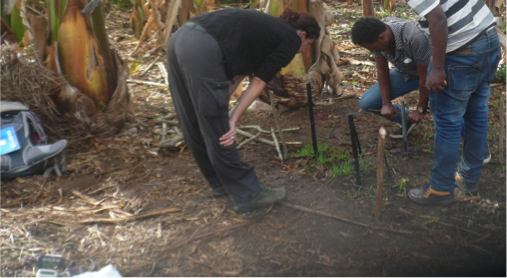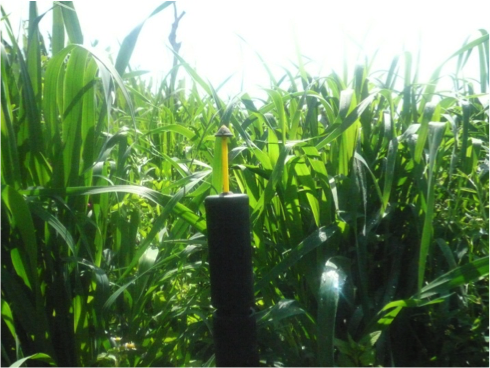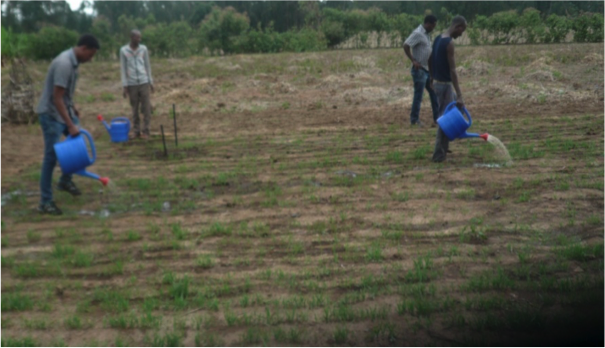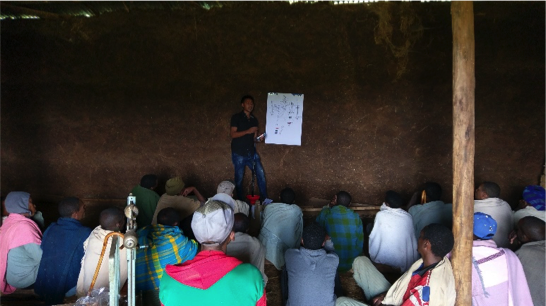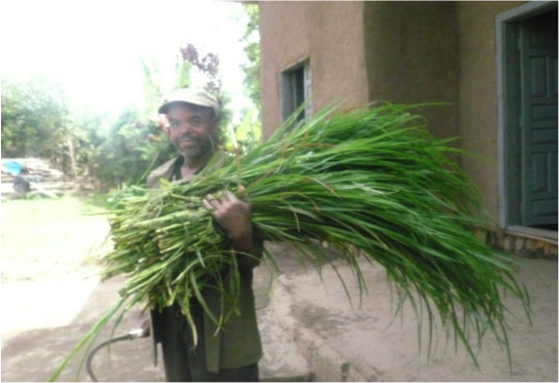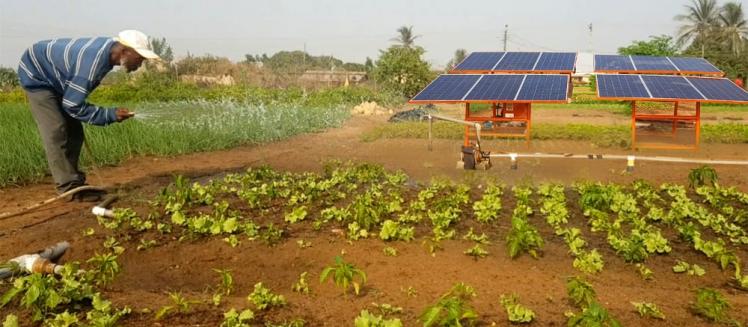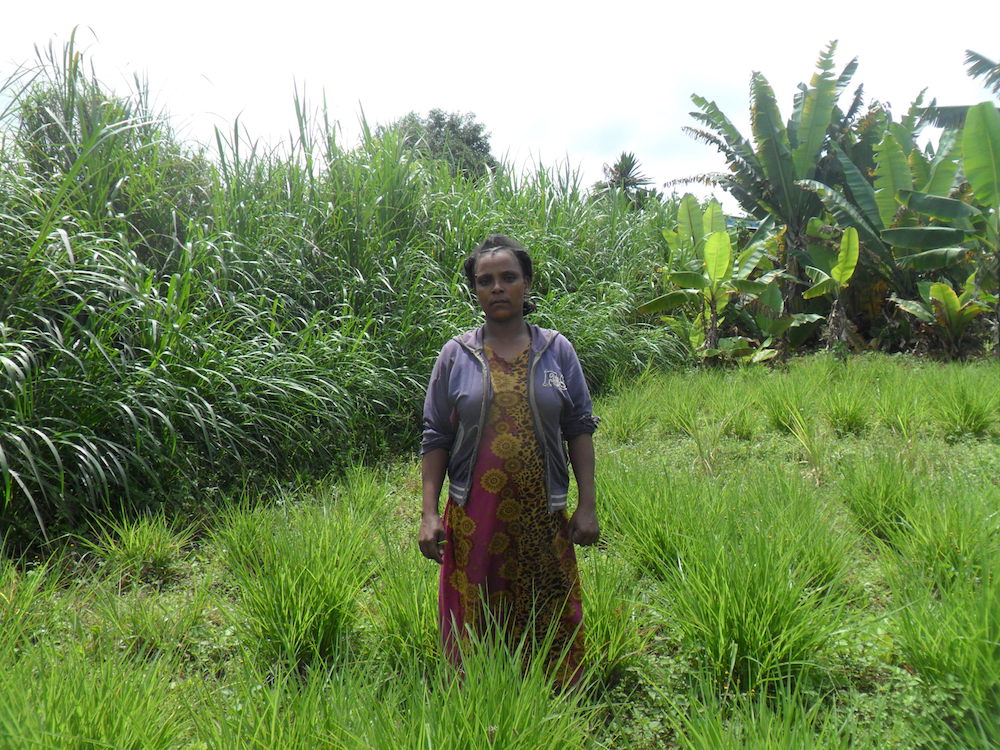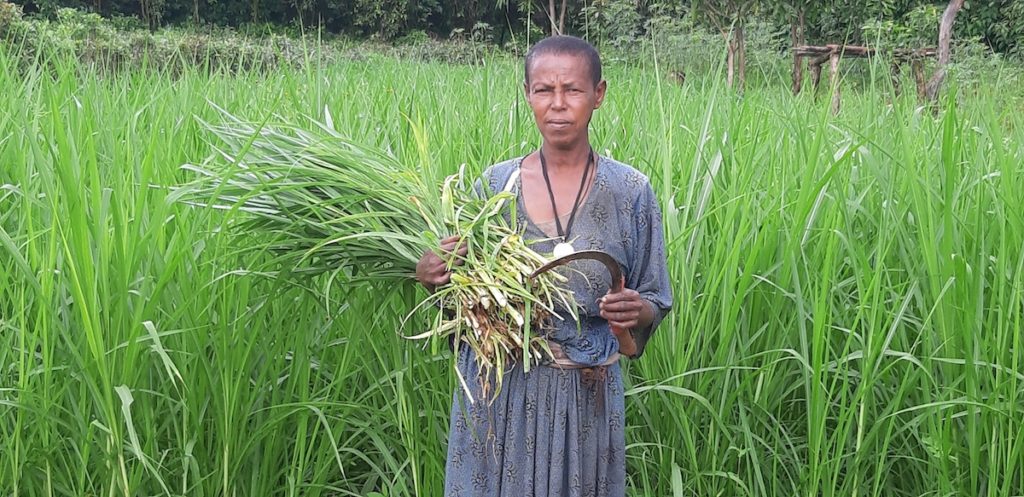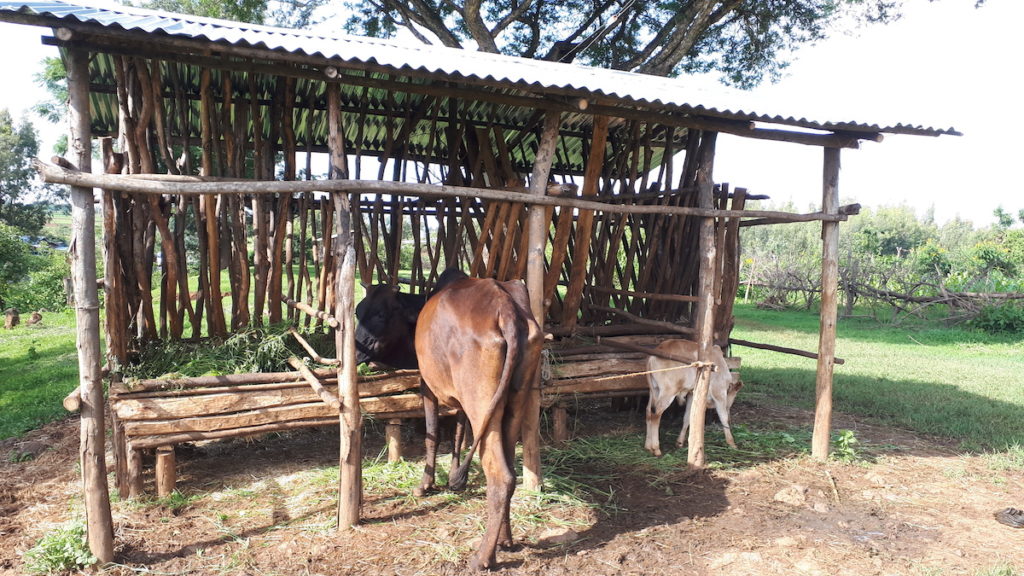In a recent webinar, scientists presented Ethiopian policymakers and practitioners with promising findings on the potential for irrigated production of livestock fodder, which could help meet important income and nutrition gaps.
Dr. Gbola Adesogan, Professor and Director of the Feed the Future Livestock Systems Innovation Lab (LSIL), opened the webinar with remarks on how insufficient feed has been identified as main constraint to livestock production in Ethiopia.
“Our objective is to share results to inform decisions and shape further investments and research, ” he said. “It is very important to promote research to support policy and further funding for this topic, not only in Ethiopia, but across East and West Africa.”
The event, which took place on December 2, 2020, was organized by the Feed the Future Innovation Lab for Small Scale Irrigation (ILSSI) with support from LSIL and in collaboration with the International Livestock Research Institute (ILRI). More than 30 participants had accepted the invitation to join discussions, and they represented science institutions, development and donor organizations as well as ministries and other government offices.
The importance of the research presented was underscored by Dr. Yirgalem Gebremeskel, Livestock Program Management Specialist and Tech Advisor at USAID, which has funded the work:
“Despite having Africa’s largest livestock population, Ethiopia’s livestock sector has not reached its full potential, which can be attributed to many factors, high among them shortage of feed and low-quality feed.”
Download presentations by ILSSI scientists on irrigated fodder suitability and potential in Ethiopia.
Significant potential could be converted into big benefits
Through land suitability analysis, scientists from Texas A & M University have been able to identify areas across the country suitable for irrigated production of different types of fodder crops.
“As you can see the western part of the country is suitable for Napier grass production, while the eastern part is highly suitable for Alfalfa, ” said Dr. Abeyou Worqlul, scientist at Texas A & M. “The suitable areas have groundwater reserves that can be tapped via water-lifting technologies and be used for irrigation.”
In fact, Dr. Yihun Tadele, also of Texas A & M, explained that Ethiopia in general has a high amount of water resources that can be used for irrigation.
“But we need to use both green and blue water resources in an integrated manner,” he specified, referring to the blue water in rivers and aquifers, while green water is naturally infiltrated rain in soil.
Finally, Jean Claude Bizimana, Economist at Texas A & M, explained how modeling different scenarios – considering for example improved crossbred cow breeds – has provided a sense of the economic and nutritional potential of irrigated fodder production.
“Use of improved feed and breed can increase households’ nutritional status, but also their incomes,” he concluded.
Growing interest for brand-new intervention in the livestock sector
The research results on suitability and impacts have already been grounded in field trials, in which a growing number of farmers have seen very promising results, both in terms of the quality of fodder produced and the resulting increases in milk yields and incomes.
“Farmers were able to produce a high amount of forage biomass of good nutritional value from small plots,” explained Dr. Melkamu Derseh, Scientist, Livestock Feeds and Nutrition, at ILRI.
While the trials started out with just a few farmers, more have volunteered to join as the work progressed.
“Awareness has been created and interest is increasing. The demand for forage planting materials and irrigation technologies has also increased, especially for the newly introduced solar pumps,” he said.
Melkamu noted that barriers currently hampering broad scaling of irrigated fodder production include limited access to high-quality cow breeds and forage planting materials as well as the high price of irrigation technologies. ILSSI is working to overcome such barriers, including via partnerships with dairy cooperatives, which could start providing their members with forage seeds and thus provide an informal seed distribution system.
To wrap up discussions, Belete Bantero, Senior Transformation Agenda Specialist II at Ethiopian Agricultural Transformation Agency (ATA), offered his perspectives. He recalled the two year-drought that wrecked havoc in Ethiopia between 2016 and 2018.
“It caused the loss of over 30,000 livestock because of lack of livestock feed.” He went on to say that “this is interesting and really vital work – it’s very evidence based, it’s timely and it’s a brand new intervention, as we have not previously related the livestock sector with irrigation.”
ILSSI scientists and partners will continue efforts to scale up irrigated fodder production in Ethiopia, including through partnerships with dairy cooperatives and the private sector.
To learn more:
- Brief: Identification of areas suited for fodder production in Ethiopia
- Brief: Estimating water resource availability to produce livestock fodder in the rainfed agricultural land in Ethiopia using small scale irrigation
- Brief: Simulated economic and nutrition impacts of irrigated fodder and crossbred cows on households in Lemo Woreda of Ethiopia


